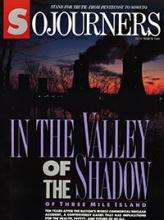With the bombing of Pan Am Flight 103 over Scotland, terrorism, as human tragedy, media sensation, and political catch-all, is back with a vengeance. In fact the vengeance is sometimes so thick that it's all too easy to lose sight of the human tragedy. The air is filled with threats and counterthreats, and the TV networks' "terrorism experts" warn of tough choices ahead in the war on terror.
In the eyes of the experts, those tough policy choices usually boil down to two options. One is a policy of broad-brush, scorched-earth retaliation against terrorists, or against cities where some terrorists are presumed to reside. The other is the slow erosion of civil liberties necessitated by the infiltration and surveillance of terrorist, or "suspected" terrorist, organizations and the inevitably messy attempts to bring them to a crude sort of justice.
For an example of civil liberties sacrificed on the altar of counter-terrorism, we need only look to Great Britain, the land of the Magna Carta. There a draconian campaign against the Irish Republican Army (IRA) has led to serious infringements of rights - such as due process and trial by jury for those suspected of crimes, and freedom of the press - that are fundamental to any free society.
The history of British domination in Ireland is, of course, centuries old. The size of our own Irish-American population, largely descendants of refugees, is testimony to the economic deprivation and cultural-political persecution visited upon England's oldest colony in times past.
Read the Full Article

